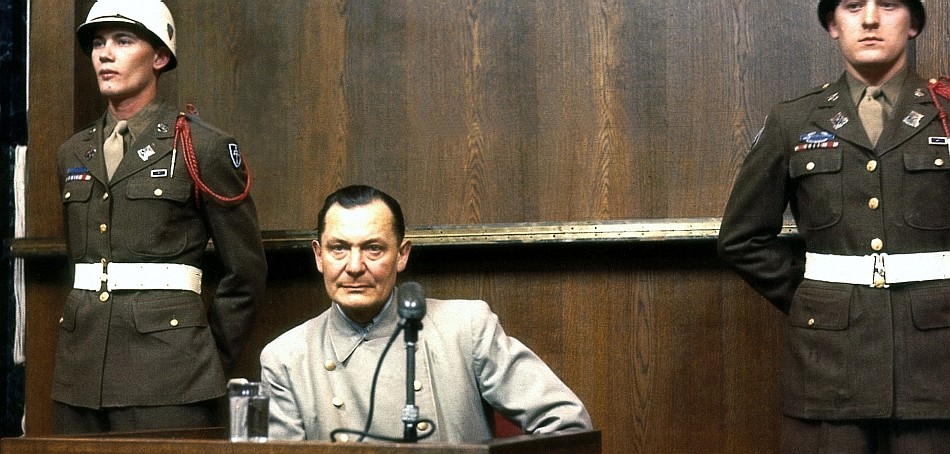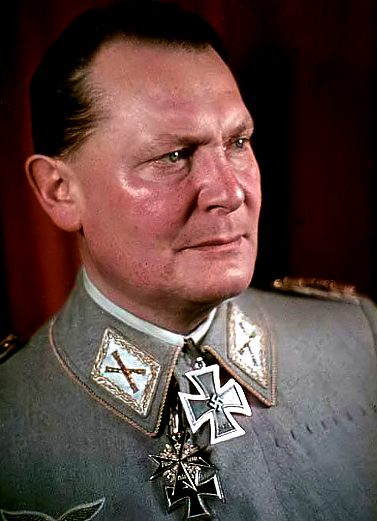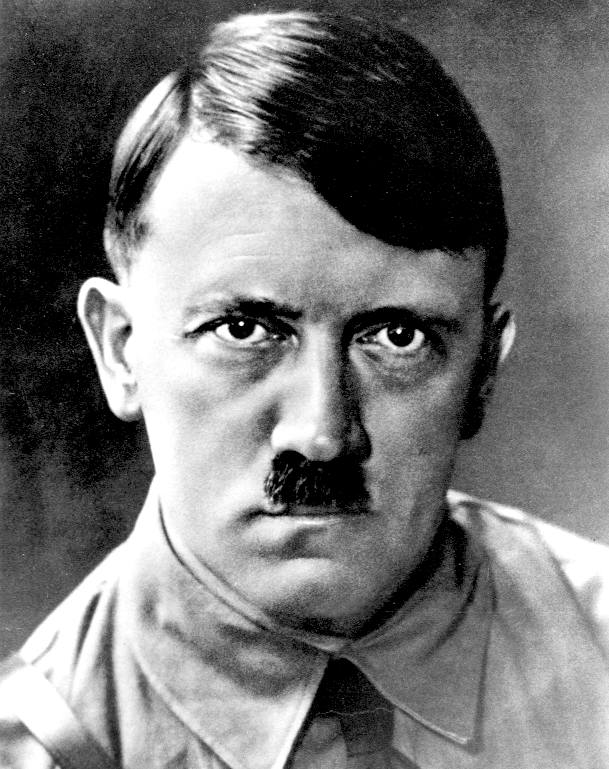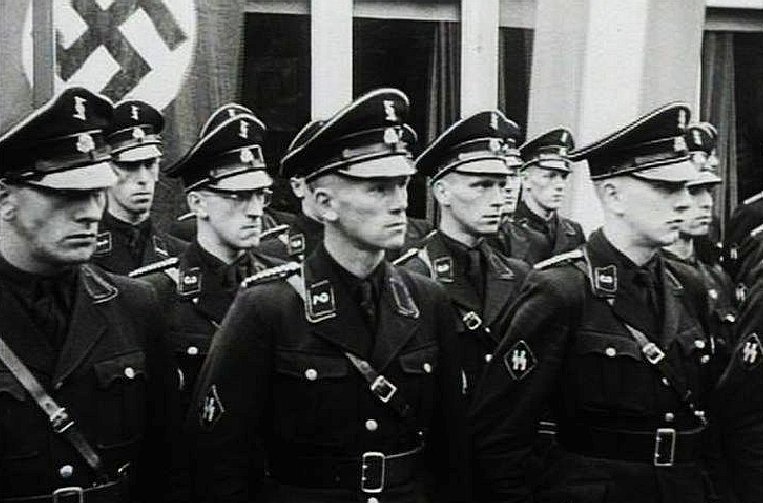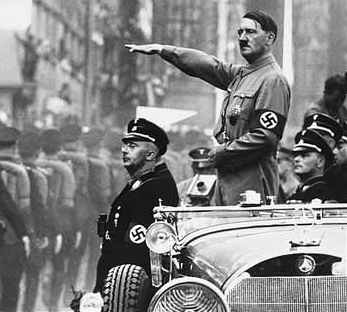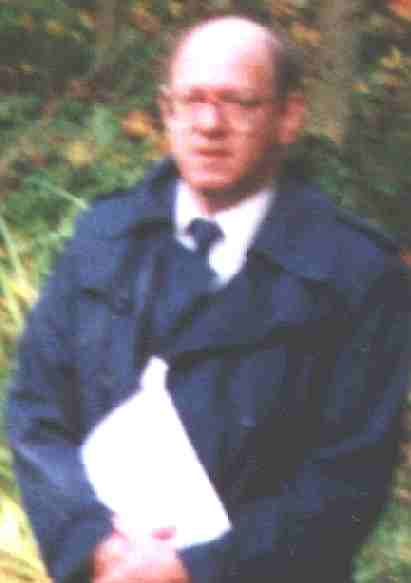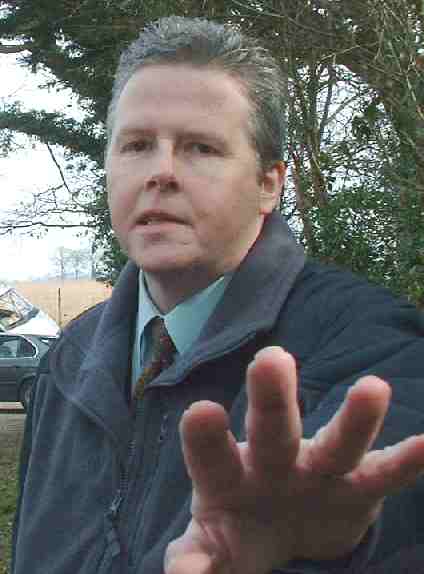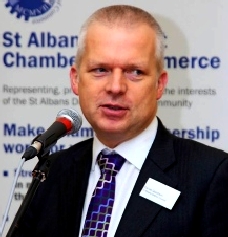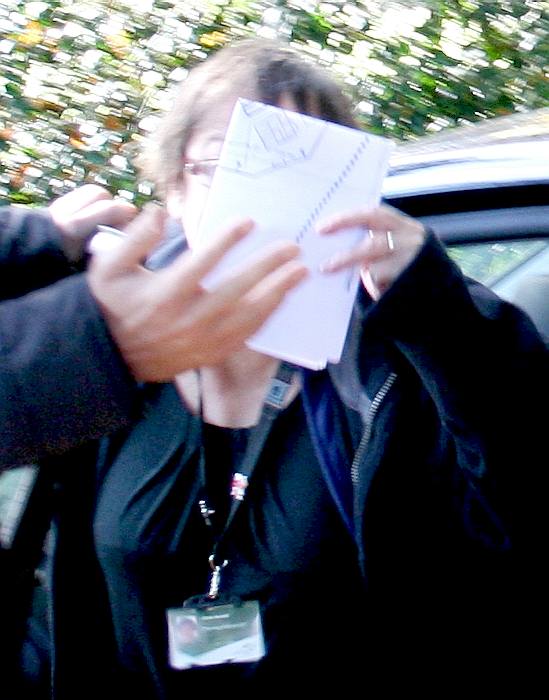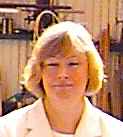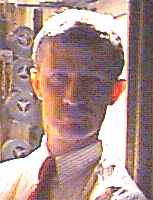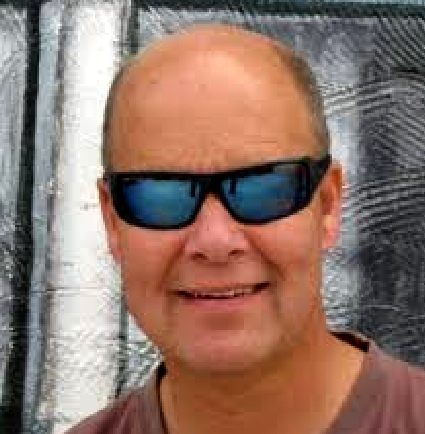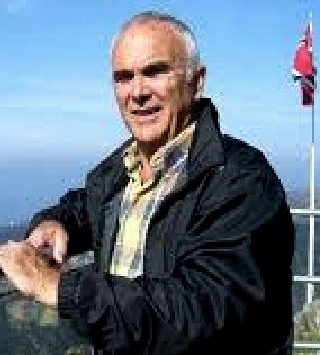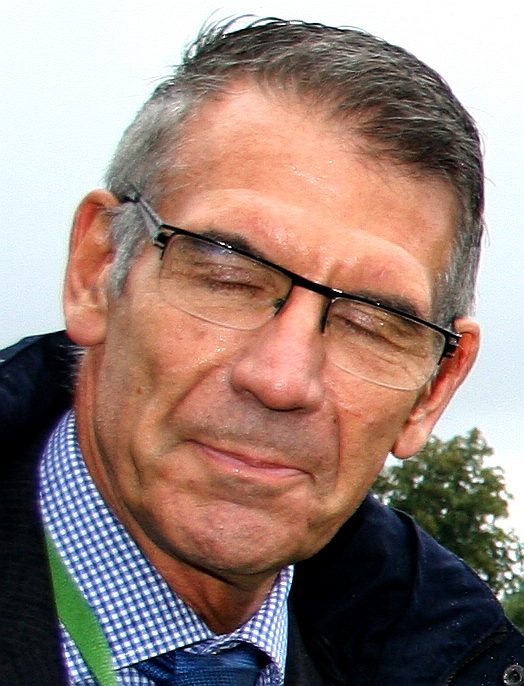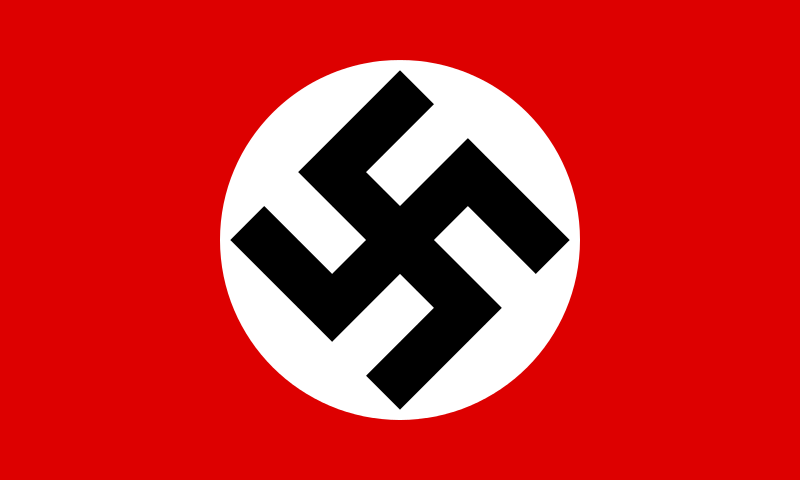|
NUREMBURG WAR TRIALS
HOME | CASE STUDIES | HISTORY | HUMAN RIGHTS | LAW | POLICE | POLITICS | RIGHTS | SHIT CREEK | SITE INDEX |
|||
|
Herman Goering on trial at Nuremburg
The
Nuremberg
War Trials (German: Die Nürnberger Prozesse) were a series of military tribunals held by the Allied forces under international law and the laws of war after World War II. The trials were most notable for the prosecution of prominent members of the political, military, judicial and economic leadership of Nazi Germany, who planned, carried out, or otherwise participated in the Holocaust and other war crimes. The trials were held in the city of Nuremberg, Germany, and their decisions marked a turning point between classical and contemporary international law.
Krebs and Burgdorf committed suicide two days after Hitler in the same place. Reinhard Heydrich had been assassinated by Czech partisans in 1942, so he was not included. Josef Terboven killed himself with dynamite in Norway in 1945.
Adolf Eichmann fled to Argentina to avoid Allied capture, but was captured by Israel's intelligence service the Mossad, convicted of war crimes, and hanged in 1962.
Hermann Göring was sentenced to death but committed suicide the night before his execution as a perceived act of defiance against his captors. Miklós Horthy appeared as a witness at the Ministries trial held in Nuremberg in 1948.
British War Cabinet documents, released on 2 January 2006, showed that as early as December 1944 the Cabinet had discussed their policy for the punishment of the leading Nazis if captured. The
British Prime
Minister, Winston
Churchill, had then advocated a policy of summary execution in some circumstances, with the use of an Act of Attainder to circumvent legal obstacles, being dissuaded from this only by talks with US and Soviet leaders later in the war.
Churchill was vigorously opposed to executions "for political purposes." According to the minutes of a meeting between Roosevelt and Stalin at Yalta, on 4 February 1945, at the Livadia Palace, President Roosevelt "said that he had been very much struck by the extent of German destruction in Crimea and therefore he was more bloodthirsty in regard to the Germans than he had been a year ago, and he hoped that Marshal Stalin would again propose a toast to the execution of 50,000 officers of the German Army."
The plan for the "Trial of European War Criminals" was drafted by Secretary of War Henry L. Stimson and the War Department. Following Roosevelt's death in April 1945, the new president, Harry S. Truman, gave strong approval for a judicial process. After a series of negotiations between Britain, the US, Soviet Union and France, details of the trial were worked out. The trials were to commence on 20 November 1945, in the Bavarian city of Nuremberg.
TRIAL & CHARGES
EXECUTIONS
Although the rumor has long persisted that the bodies were taken to Dachau and burned there, they were actually incinerated in a crematorium in Munich, and the ashes scattered over the river Isar. The French judges suggested that the military condemned (Göring, Keitel and Jodl) be shot by a firing squad, as is standard for military courts-martial, but this was opposed by Biddle and the Soviet judges, who argued that the military officers had violated their military ethos and were not worthy of death by being shot, which was considered to be more dignified. The prisoners sentenced to incarceration were transferred to Spandau Prison in 1947.
Of the 12 defendants sentenced to death by hanging, two were not hanged: Martin Bormann was convicted in absentia (he had, unknown to the Allies, died while trying to escape from Berlin in May 1945), and Hermann Göring committed suicide the night before the execution. The remaining 10 defendants sentenced to death were hanged.
By the time the Germans invaded Poland in September 1939, unleashing World War II, there were six concentration camps in the so-called Greater German Reich:
1. Dachau (founded 1933)
2. Sachsenhausen (1936)
3. Buchenwald (1937)
4. Flossenbürg in northeastern Bavaria near the 1937 Czech border (1938)
5. Mauthausen, near Linz, Austria (1938) and
6. Ravensbrück, the women's camp, established in Brandenburg Province, southeast of Berlin (1939), after the dissolution of Lichtenburg.
TOP
10 MOST WANTED NAZI WAR CRIMINALS
Adolf Hitler and chum Heinrich Himmler [Allegedly, Adolf Hitler did not die in that bunker incident C.1949. Apparently, he was fired into England, strapped to a V1 rocket, leaving behind his false teeth. He parachuted into Wealden that night hoping to meet some deviants, who'd arranged a new identity for their fallen comrade. Apparently, he landed in Crowborough, shaved off his moustache and was mistaken for a council official, whereupon he infiltrated the ranks of the local council and trained them how to use his terror tactics to control the peasant civilians]
Victorio Scarpa, David Whibley, Julian Black, Daniel Goodwin, Christine Arnold, Patrick Coffey, Timothy Dowsett
Christine Nuttall, David Phillips, Douglas Moss, Ian Kay, Charles Lant, Beverley Boakes, Kelvin Williams Christine Nuttall, David Phillips, Douglas Moss, Ian Kay, Charles Lant
Abbott Trevor - Alcock Charmain - Ditto - Arnold Chris (Christine) - Barakchizadeh Lesley - Paul Barker - Bending Christopher Black Julian - Boakes Beverley - Bradshaw Clifford - Brigginshaw Marina - Brown Ashley - Coffey Patrick - Douglas Sheelagh Dowsett Timothy - Flemming Mike - Forder Ralph - Garrett Martyn - Goodwin Daniel - Henham J - Holness Derek Hoy Thomas - Johnson Geoff - Kavanagh Geoff - Kay Ian - Kay I. M. - Barbara Kingsford - Lant Charles - Mercer Richard Mileman Niall - Moon Craig - Moss Douglas, J. - Nuttall Christine - Pettigrew Rex - Phillips David - Scarpa Victorio - Scott Trevor Kevin Stewart - Wakeford M. - Whibley David - White, George - Williams Kelvin - Wilson Kenneth - White Steve
LINKS & REFERENCE
|
|||
|
This site is free of © Copyright except where specifically stated 1997 - 2021. Any person may download, use and quote any reference or any link, and is guaranteed such right to freedom of information and speech under the Human Rights and Freedom of Information Acts. However, be aware that we cannot be held liable for the accuracy of the information provided. All users should therefore research matters for themselves and seek their own legal advice and this information is provided simply by way of a guide. Horse Sanctuary Trust UK All trademarks herby acknowledged.
This site contains copyrighted material the use of which has not always been specifically authorized by the copyright owner. We are making such material available in our efforts to advance understanding of environmental, political, human rights, economic, scientific, and social justice issues, etc. We believe this constitutes a 'fair use' of any such copyrighted material as provided for in section 107 of the US Copyright Law. In accordance with Title 17 U.S.C. Section 107, the material on this site is distributed without profit to those who have expressed a prior interest in receiving the included information for research and educational purposes. FAIR USE NOTICE
|
